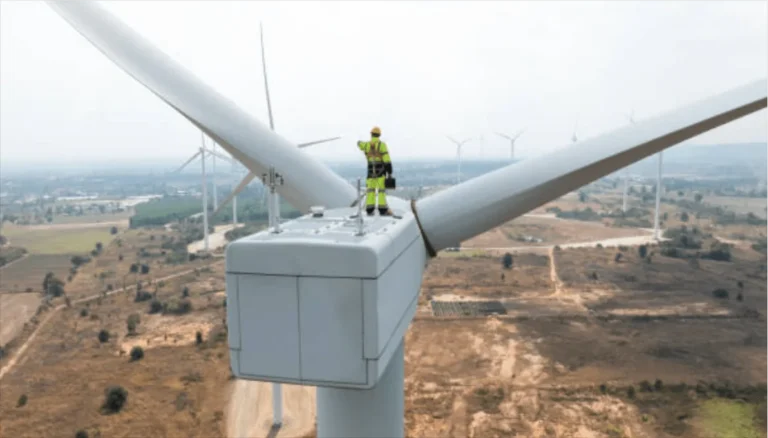As global efforts toward clean energy accelerate, wind power has become a cornerstone of sustainable electricity generation. Yet, behind the promise of renewable energy lies an ongoing challenge — maintaining the durability and performance of wind turbines, particularly their blades. Wind turbine blade repair is an increasingly critical field that combines engineering expertise, advanced materials, and logistical precision to keep wind farms running efficiently and safely.
The Cost of Downtime
For wind farm operators, blade damage carries more than structural risk — it represents a major financial burden. A single blade failure can exceed $30,000 in repair costs, while every day of unplanned turbine downtime can add over $1,600 in lost productivity. In an industry built on uptime and output, minimizing downtime is a key operational priority.
Adding to this challenge are short warranty periods and rapid market expansion. As turbine fleets age and new designs enter the field, the demand for dependable, responsive blade maintenance grows in both frequency and urgency.
Diagnosing Diverse Damage
Wind turbine blades endure punishing conditions throughout their lifespan. They face intense mechanical stress, temperature fluctuations, ultraviolet radiation, and rain or hail erosion — all of which contribute to wear and tear. Damage can range from surface erosion to deep internal cracking or delamination that compromises the blade’s structural integrity.
Because damage types vary widely, accurate diagnosis is essential but often difficult. Pinpointing the source of a failure requires advanced tools, such as ultrasound scanning, thermographic imaging, and 3D surface mapping. These technologies allow technicians to detect hidden defects before they escalate into larger issues.
Further complicating repairs, most blades are built from unique, proprietary composite materials, making sourcing and matching components complex. Skilled technicians must understand both the engineering design and material composition to ensure that repairs restore — or even enhance — the blade’s original performance.
Geographic and Logistical Barriers
Wind farms are often situated in remote, challenging environments — from offshore installations to isolated highland ridges. These locations, while ideal for power generation, create logistical obstacles for maintenance. Transporting personnel, tools, and replacement materials can be time-consuming and costly, especially when weather conditions limit access.
Optimizing resources becomes vital. Limited on-site staff and specialized equipment mean that every repair must be carefully planned and executed. Skilled technicians are in high demand, making efficient scheduling and workforce management essential to keeping turbines operational.
Balancing Safety and Sustainability
Repairing turbine blades isn’t just technically demanding — it’s physically hazardous. Maintenance often occurs at great heights and under unpredictable weather conditions. Strict safety measures are mandatory, but they add layers of complexity and time to each project.
Fortunately, the industry is evolving. Advances in composite repair materials now offer enhanced durability and reduced environmental impact. Many operators are also adopting preventive maintenance strategies supported by predictive analytics — identifying early signs of fatigue before failures occur.
Drones and automated inspection systems are playing an increasingly important role in this transition. By capturing high-resolution imagery and thermal data, these technologies enable faster, safer assessments of blade condition, particularly in hard-to-reach sites. Combined with data analysis, they allow for more proactive maintenance scheduling and improved sustainability.
Looking Ahead: Innovation Driving Reliability
As the wind industry grows, so does the need for innovation in repair and maintenance. Continued research into stronger, more sustainable composite materials, advanced diagnostic tools, and automated repair systems will be crucial to supporting this momentum.
The objective is straightforward but demanding: extend the life of turbine blades, reduce operational costs, and sustain energy output while maintaining safety and environmental responsibility. Meeting this challenge requires collaboration between manufacturers, engineers, and service providers — all working toward the shared goal of powering a cleaner, more reliable future.
Hey, Molar is the voice behind this all-encompassing blog, sharing expert insights and practical advice on business, real estate, and more. Dedicated to helping you navigate the complexities of these fields, Kelly provides the latest trends, in-depth analyses, and creative strategies to elevate your ventures.
